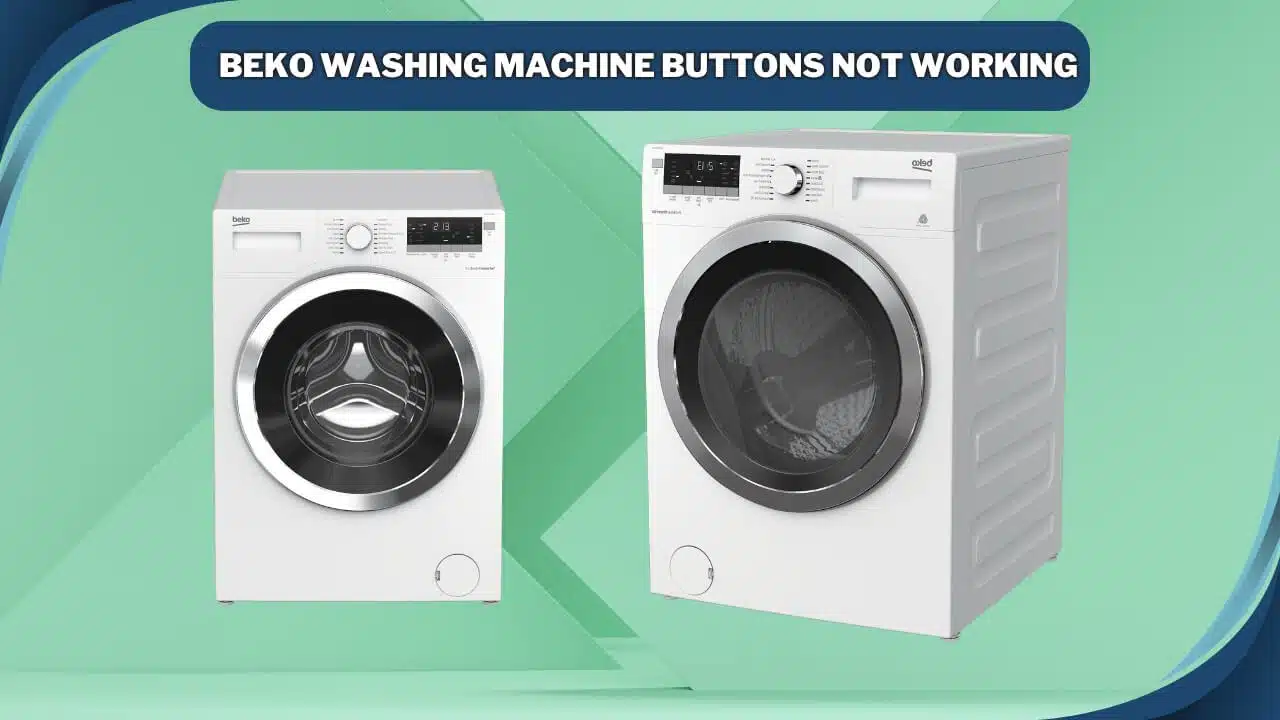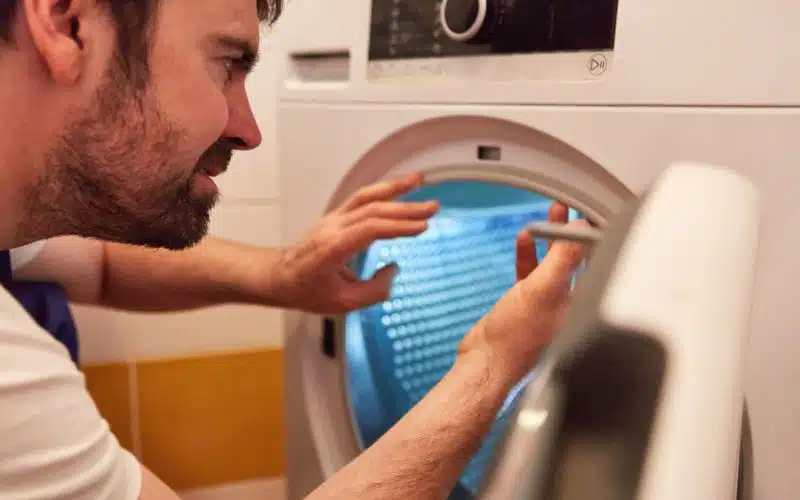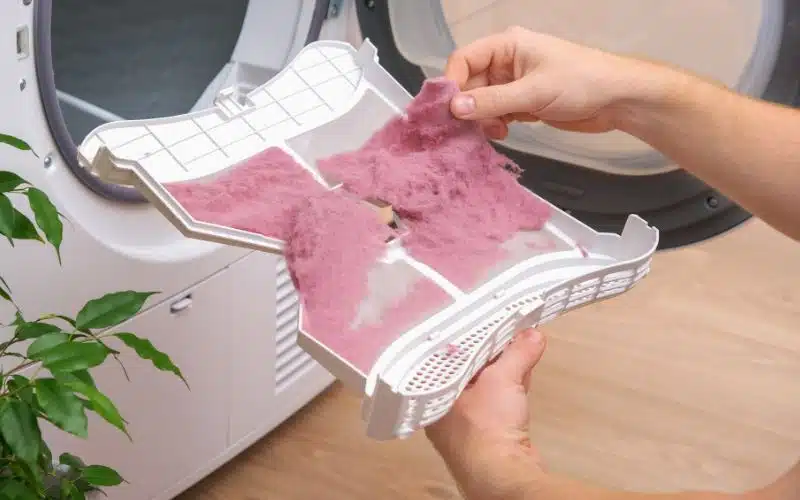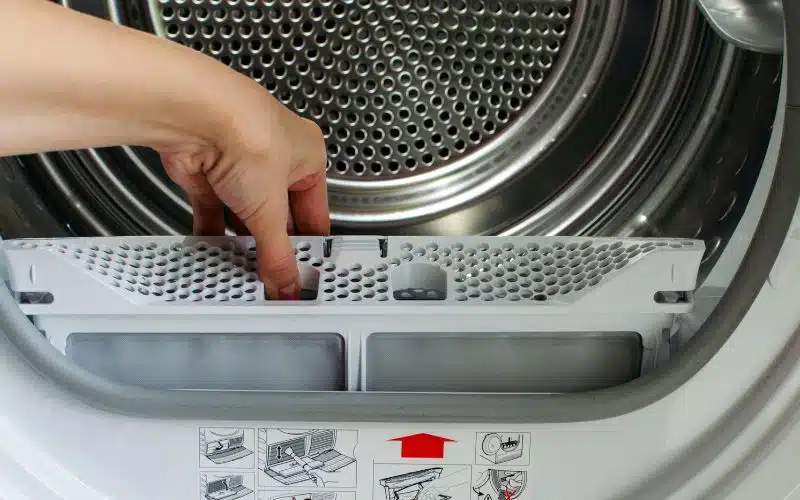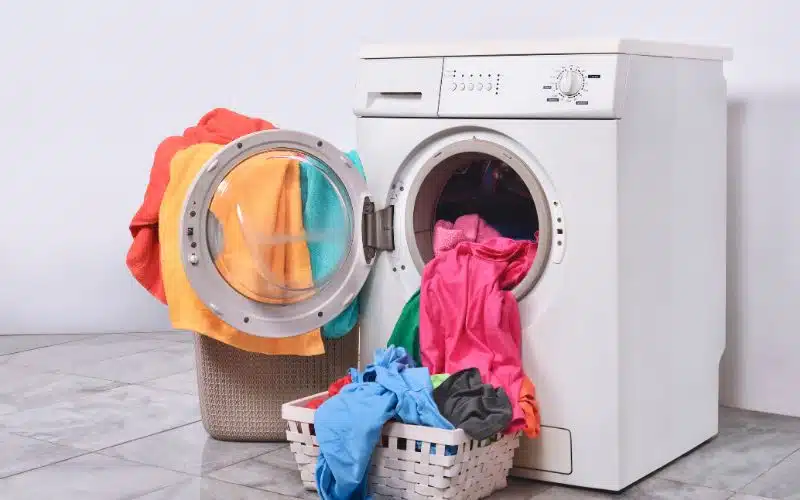Dryers are an asset in any home. They are even more valuable when they can dry clothes quickly.
Dryers with fast-drying speeds help save laundry time and the cost of energy bills.
For this reason, sometimes you cannot help but wonder just how long a dryer takes to dry clothes. Knowing this will be very useful if you want to replace or buy a new dryer.
Generally, dryers take between 30 to 45 minutes to dry an entire cycle of clothes. However, this speed varies depending on several factors. These factors include the material of clothes you are drying, the load size, and the dryer settings. Dryer speed also depends on how efficient and well you maintain the dryer.
How Long Does a Dryer Take to Dry One Shirt?

It takes about 10 to 15 minutes to dry a single shirt. Like every other fabric, the time it takes a dryer to dry one shirt depends on the material.
Some fabrics are more quick-drying than others. When it comes to natural materials, cotton fabrics dry fastest, followed closely by silk.
Usually, natural materials dry faster than synthetic fabrics like nylon, polyester, and rayon.
One tip for drying a shirt faster is to add a dry towel to the shirt in the dryer. This dry towel helps to absorb the shirt’s wetness.
How Long Does It Take for Pants to Dry in the Dryer?
The drying time for pants can take between 10 to 15 minutes, depending on several reasons.
These reasons are the material of the pants, the dryer settings, and the dryer brand. You should also consider if there are other clothes and how many pants you want to dry at a time.
For example, jeans take longer to dry than other pant fabrics. Also, the more pants you dry at a time, the longer it takes.
How Long Does an Electric Dryer Take to Dry Clothes?
It takes 30 to 45 minutes for an electric dryer to dry clothes. The determining factors are the same as with other types of dryers, as seen below:
#1. Clothing Material
Heavier clothes like duvets and blankets take longer to dry than thin clothes like shirts.
A load of lightweight clothes will take approximately 40 minutes to dry, while a load of heavyweight clothes will take at least an hour to dry properly.
Delicate clothes like undergarments take even lesser than 30 minutes to dry.
#2. Size of Load in a Cycle
The more the clothes in a cycle, the more time they will take to dry. It will take even more time if the clothes in the cycle are bulky like comforters.
On the other hand, drying single pieces of clothing take less time than drying a whole load of clothes.
Therefore, it is advisable to dry one clothing item at a time if you need it as soon as possible.
The mechanism behind this is simple. The clothes need enough space to whirl about, allowing for enough heated air to dry up the clothes.
The fuller the load cycle, the less time it takes to dry, as there is not enough space for the dryer to do its work.
#3. Dryer Settings
All dryers come with different heat settings, which help to determine how short or long the drying time will be.
Most dryers have instructions on the manual that tell you the best heat setting to use on your clothes.
Using the hottest setting on your fabric might make sense to dry them as quickly as possible. However, this is a wrong decision as it can cause damage to your fabric.
#4. Dryer Efficiency
The rate of drying clothes also depends on the type and brand of the dryer. There are four types of dryers: vented, condenser, gas-electric, or electric.
Due to their engineering, these dryers have different rates of drying. Generally, vented dryers are faster than the others.
You should also know that a commercial dryer takes less time to dry clothes than domestic dryers.
Different brands also have different drying rates. Below is a table showing different dryer brands and the average time they take to dry clothes.
| Types of Dryers | Average Drying Cycle Time |
|---|---|
| Samsung | 60 -73 minutes |
| Whirlpool | 64 – 75 minutes |
| Miele | 34 – 53 minutes |
| GE | 58 – 72 minutes |
Even though electric dryers are cheaper and more in circulation than gas-electric dryers, they are not as efficient as electric gas dryers.
These electric dryers take longer to get hot and cannot muster enough heat like their gas counterparts.
This feature makes their time and power-consuming and more expensive to use and maintain in the long run.
#5. Dryer Maintenance
Like with every other appliance, the more cleaning and servicing you do, the longer they will last.
For dryers, including electric dryers, cleaning and maintenance are relatively straightforward.
Take time to clean out the lint tray and trap it with a vacuum cleaner after every use. Also, clean the vent at the back of the dryer as often as twice a year.
Doing these simple practices will prevent and track the occurrence of technical problems.
For example, problems like broken air vents, sensors, or heating elements can arise from clogged vents.
These problems can cause dryer overheating, slow drying time, or even cause a fire. However, you can fix these problems yourself or with the help of professionals.
How Long Does a Whirlpool Commercial Dryer Take?
Even with Whirlpool commercial dryers, drying time can vary depending on the model and your chosen cycle.
The rate of drying also depends on other common factors already discussed. The cycles on the whirlpool dryer fall into two groups which are automatic and manual. In automatic cycles, the dryer detects the required heat rate and timing.
Most machines have different automatic settings, which are heavy-duty, regular, or delicate. Heavy-duty, regular and delicate cycles take about 40, 30, and 20 minutes respectively.
You can choose how dry and how long the cycle lasts with manual cycles. Like the automatic cycles, the manual cycle is also three-fold. These settings are timed-dry, quick-dry, and touch-up.
Touch-up cycles help to remove cresses from clothes, while quick-dry cycles are efficient in drying small clothing loads. Timed-dry requires you to enter your desired drying time into the machine.
Which Dryer Setting Dries Fastest?
Undoubtedly, the fastest dryer setting is either named automatic, regular or a timed cycle.
Note that the name of the setting varies depending on the dryer brand. This setting employs the highest heat compared to other settings.
Also, depending on the dryer brand, you can input the desired time, or the machine sets a time for itself.
However, using this setting for all your clothes is not advisable. Most dryers have simple instructions and settings for different fabrics.
Following these instructions will guarantee the longevity of your clothes.
Below is a guide to dryer settings concerning different fabrics.
#1. Low Heat
Low heat is also known as delicate or gentle cycles. Though this time takes longer than other cycles, it is appropriate for fabrics like elastics, lace, silk, other intimates, and even baby clothes.
In addition, it is perfect for clothes that can get destroyed with high heat.
#2. Medium Heat
Medium heat is good for clothes you often wear, like t-shirts, especially cotton ones. This setting is also suitable for polyester clothes that do not readily absorb water.
Always using high heat for clothes like this will cause the clothes to wear out quickly. On some machines, wrinkle-resistant or permanent-press settings utilize medium heat.
Permanent-press is proper for drying colored clothes and knitted clothes as high heat will cause them to fray easily.
#3. High Heat
High heat is only applicable for heavy clothes. The setting is also suitable for clothes you do not wear or wash often.
Examples of such clothes are towels, jeans, duvets, and other heavy materials. Even though you can use this setting on clothes that require medium heat, it should not be a regular occurrence.
#4. Air Dry
This setting is also known as air fluff on some dryers. This unique feature of air drying is that it does not use heat.
Instead, the dryer relies on the air in the surrounding environment to dry the clothes as they tumble. This mechanism works well for blankets and clothes you want to “fluff.”
#5. Steam Drying
This setting is typical in newer dryer models. This setting uses steam instead of heated air.
This feature makes it more perfect for refreshing clothes rather than drying them. It is also handy in removing wrinkles and creases from clothes.
Conclusion
In truth, dryers that take less time to dry clothes are preferable. Because they consume less energy, their Combined Energy Factor (CEF) number makes it easy to identify dryers with high energy efficiency.
The higher the value of this number, the higher the dryer’s efficiency. As a result, these dryers are cheaper to maintain, especially in terms of energy bills.
